by SOS Wildlife Control | Nov 13, 2015 | Squirrel Control
Last Updated: May 2016
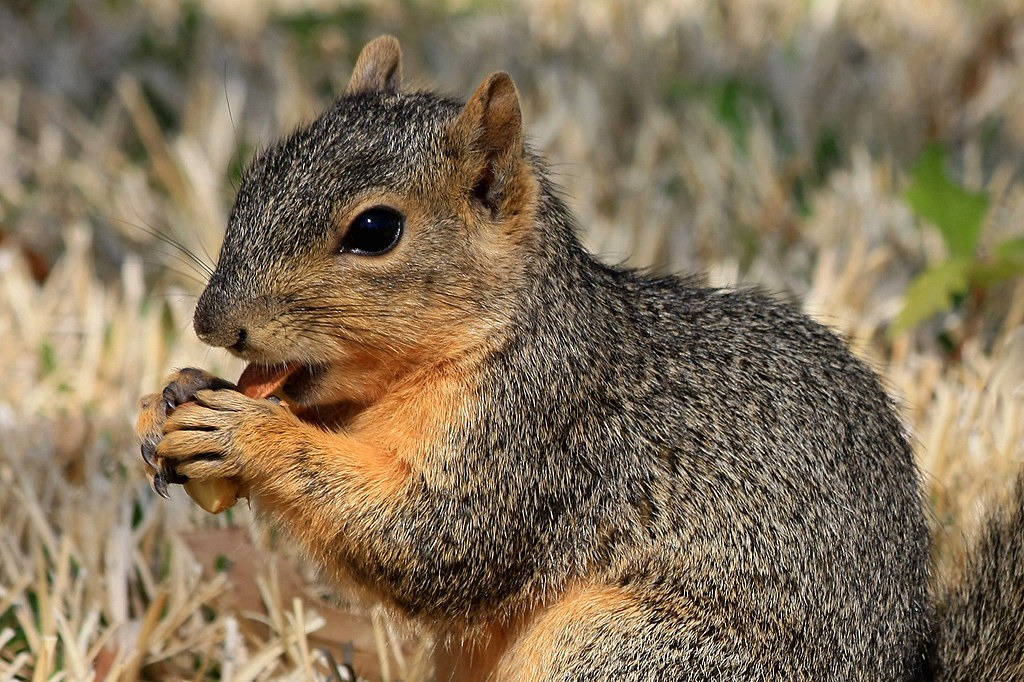
How much does squirrel removal cost? Squirrel Removal costs vary as not every squirrel removal job is the same. Calling a wildlife removal service to remove a squirrel in your yard is a lot different to removing squirrels in an attic where baby squirrel removal is also required. There are some very low priced removal services, some higher than average, but in all aspects of life you get what you pay for. Fortunately learning what you are paying for has got a lot easier with customer review sites. For wildlife removal in Toronto, Homestars is a great site to see previous customer experience with wildlife removal companies. You can check out our reviews on Homestars here. Squirrel removal is our business and it is very important to us to do the job right and make the customer happy. Please don’t forget if you use our service to leave us a review for our future customers.
Squirrel Removal Cost
For immediate squirrel removal solutions it will vary in cost from $275 to $500. With SOS Wildlife Control Incorporated this will include a full inspection of the roof, attic and other areas of premises to determine all entry routes. We will seal up holes the squirrel has made and install a one way door. The one way door will permit the animal to leave and not re-enter. Additional damages needing to be covered are not included in that price.
We offer additional services for additional charges. If you have a bigger problem you will need to have the problem inspected by a wildlife technician who can then provide you with a quote. Bigger problems include multiple animals living in your home or wildlife proofing your property to prevent future nuisance wildlife entering etc.
Squirrel in the Attic:
Noise in your attic is usually caused by unexpected guest, usually a squirrel. Squirrels are one of the most common wildlife pests. One common complaint is the hearing of “scratching”, which usually ends up being a squirrel in the attic.
Call us for squirrel removal at 647-994-9453.
Since squirrels are rodents, their front teeth continuously grow, causing the squirrel to chew, in order to keep their teeth sharp. This is why most of the damage caused by squirrels includes damages caused by chewing. When in nature, squirrels tend to chew on tree barks, twigs and other natural hard items. But when confined in your attic, they chew on electric wiring, roof braces, wood and electrical fixtures. If you hear chewing or scratching in your attic don’t hesitate to call us at SOS Wildlife Control Incorporated.
How are Squirrels removed?
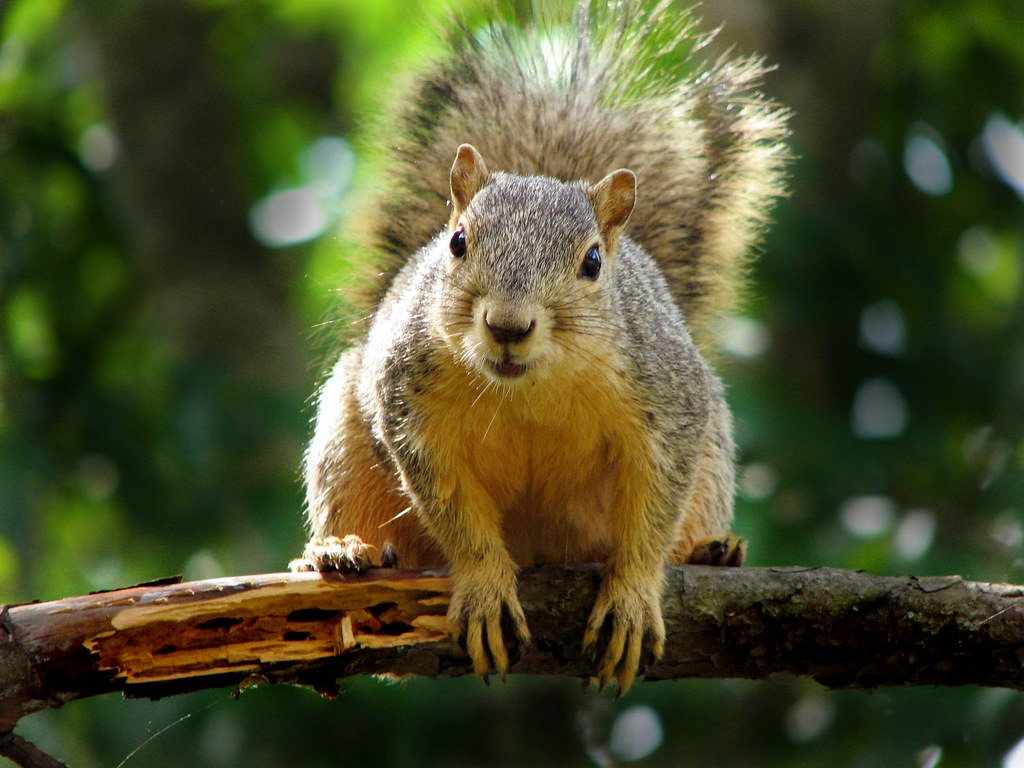 SOS Wildlife Control Incorporated will arrive at your home, inspect your attic or garage or wherever you hear the wild animal and provide you with a thorough outline of what the problem is, finding the main entry point, the options you have and give you an estimate.
SOS Wildlife Control Incorporated will arrive at your home, inspect your attic or garage or wherever you hear the wild animal and provide you with a thorough outline of what the problem is, finding the main entry point, the options you have and give you an estimate.
The standard humane method for removing squirrels is with a one-way door covering the main entry hole. This ensures the squirrels leaves and cannot re-enter. This involves little to no contact with the squirrel which is the most humane option.
If it is during baby season the technician will be able to seek out the babies and remove them from the property. Once the technician have all the babies, they will put them in a safe heated box close to the one way door that is set up for the mother. Eventually the mother will come and relocate the babies to a new den. Read further on baby squirrel removal.
Other principals to consider with squirrel removal cost
As the prices will vary from company to company in Toronto GTA there are a few other principals you should consider along with the price.
- Wildlife control is a highly specialized work with unique liabilities dealing with wild animals.
- There is no one price fits all as every job is different.
- If you don’t take care of the problem immediately it will end up costing a lot more in the future.
- You pay for what you get! Hiring the cheapest company may mean bad workmanship. We have received plenty of phone calls from customers who have had bad experiences with other companies and are willing to pay whatever it takes to get the job done. Bad workmanship and still having wildlife in your home can be very frustrating and you will just want them out.
- Wildlife professionals are not government licensed so you need to ensure the company you hire know the law, what is legal and illegal. You can read up on the law yourself on the Ministry of Natural Resources website. Ensure the technicians removal techniques are humane and they know that animals have rights too. Incompetent advice, poor workmanship, health and safety issues and inhumane treatment of wildlife are characteristics you want to avoid. When hiring a company ask them about the animal, they should know the life cycle of the animal, be aware of birthing seasons and complete an inspection of your attic. Check customer Homestar reviews like ours, please check our Homestar Reviews and leave us one (upon hire). This is one of the best ways to get to know a company.
Our professionals at SOS Wildlife Control Incorporated can assist you with your squirrel control problem. We will come to your property and provide a consultation for your unique squirrel problem and remove it from the site in the required manner. Our services include:
- Squirrel removal
- Squirrel control
- Squirrel proofing
- Squirrel trapping
SOS Wildlife Control Incorporated has completed courses, knows the law and ensure all removals are humane. All our technicians have years of experience and have the animals safety as their top priority.
Please note that the city does not provide wildlife removal services, they do provide services for pets but they will not remove wildlife from your home. You need to contact a professional like SOS Wildlife Control Incorporated for that – You can read more in our blog “Animal Control vs Wildlife Control in Toronto“
It is illegal in Ontario to kill these animals. The Ontario Ministry of Natural Resources and Forestry regulates rehabilitation of wildlife and squirrels must be humanely removed and relocated.
Call us today to schedule humane squirrel removal 1.800.981.0330
Quick Squirrel Facts:
- Color is usually Gray with a white belly but there are several color phases, i.e. brown, black, etc.
- Weight slightly varies between Males & Females weighing around 1-2 pounds
- Will gain access to your home by:
- Chimneys
- Roof vents
- Attic fans
- Stove, dryer and furnace vents
- Wood siding
- Damage they will cause once inside home:
- Contamination of insulation
- Chewing of electrical wires and cables
- Young may fall between walls and die, causing an odor
- Urine & feces contamination
by SOS Wildlife Control | Nov 12, 2015 | Squirrel Control
Last Updated: May 2016
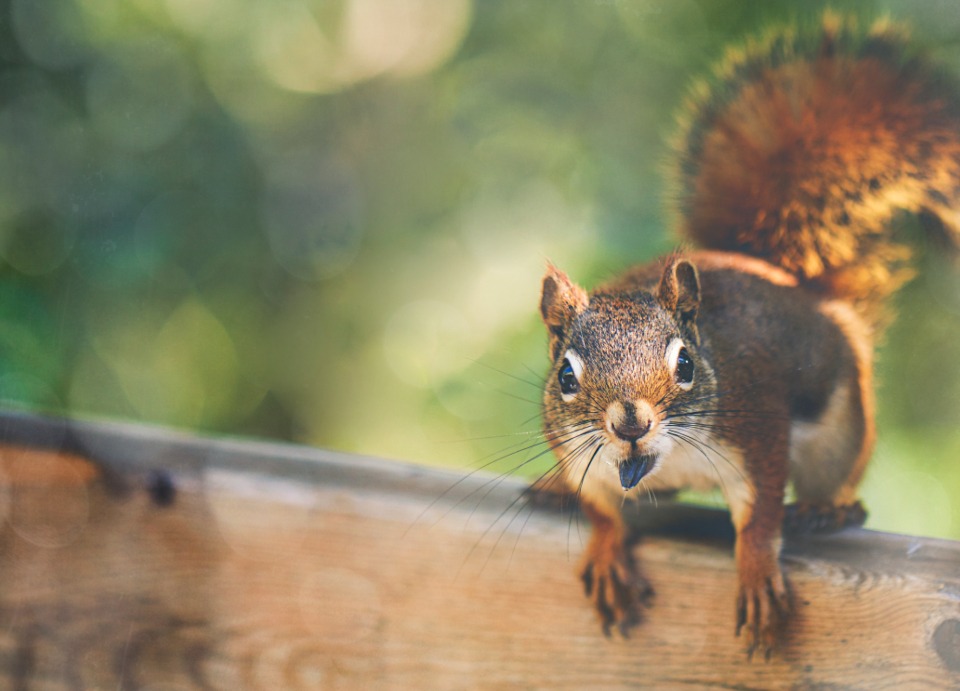 Small and quick footed, these little creatures can cause quite the headache to many homeowners across the GTA. Squirrel Damage is one of the most common wildlife problems in Ontario. We see them everywhere, under all types of weather conditions; squirrels are a part of our culture, and of our natural environment. The trouble starts when the weather conditions become more and more extreme, and they start looking for shelter. As it starts snowing and weather gets colder, squirrels start looking for a new home. Often times they sneak in through garage doors, structural cracks, climb through left open doors and windows and climb down your chimneys. Their preference? Your attic! Squirrels in the attic is very common as it is quiet, well insulated, and away from the people. They like to build their dens, and bring their young ones over here. During their stay, they leave behind their feces and plenty of urine. This in return attracts other animals and the squirrel damage begins. Aside from spreading germs and possible diseases, squirrels also cause physical harm to your property. Their urine will weaken the floors, ceilings and lead to leaking. It will stain and spread very quickly.
Small and quick footed, these little creatures can cause quite the headache to many homeowners across the GTA. Squirrel Damage is one of the most common wildlife problems in Ontario. We see them everywhere, under all types of weather conditions; squirrels are a part of our culture, and of our natural environment. The trouble starts when the weather conditions become more and more extreme, and they start looking for shelter. As it starts snowing and weather gets colder, squirrels start looking for a new home. Often times they sneak in through garage doors, structural cracks, climb through left open doors and windows and climb down your chimneys. Their preference? Your attic! Squirrels in the attic is very common as it is quiet, well insulated, and away from the people. They like to build their dens, and bring their young ones over here. During their stay, they leave behind their feces and plenty of urine. This in return attracts other animals and the squirrel damage begins. Aside from spreading germs and possible diseases, squirrels also cause physical harm to your property. Their urine will weaken the floors, ceilings and lead to leaking. It will stain and spread very quickly.
It’s in their nature for squirrels to chew. They chew on variety of things including metal to keep their teeth short and sharp. Just like their nails, their teeth also grow, and this the only way they know how to keep it trimmed. Squirrel bite marks are the most common damage found where they have set up their dens. They are also notorious for chewing on electrical cables. This is not only a headache to replace; it’s also extremely dangerous as it been the cause of house fires across Canada and the U.S. Their sharp nails which help them climb and grip is also problematic when it comes to damages. They scratch hardwood and plastic surfaces, digging their nails in as deep as half an inch.
Squirrels main objective is to seek warmth and security from extreme weather conditions for themselves and their families. Unlike skunks and raccoons, one would rarely see these little creatures wandering around their home. They are often in hiding in places like the attic or under staircases. Because they don’t wander around the house looking for food, they source external resources and bring their food into their dens. In order for them to enter and exit in and out of your property, they tend to create an obvious opening if there isn’t already one existing. Using their teeth and fingers, they chew out and carve openings where they can bring in food they find outside for themselves and their families. They usually eat through shingles on the roof, or vent pipes to make their entrance ways. All of these damages can be extremely costly and have domino effect in determining repairs.
In not so extreme weather conditions, squirrels still go around, causing damage to properties. They can eat through lead sheathing, fiberglass, and polyethylene. These surfaces are inclusive of but not limited to roofs, water pipes, doors, sliding doors, etc. The squirrel damage caused on one’s property can depreciate the value of one’s home, cause injuries, and under worst case scenarios, even cause fire. Needless to say these little wildlife creatures and the damage they are capable of causing are nothing to be taken lightly.
How to Detect and Avoid Squirrel Damage on your Property
Although the most residents of Toronto and the GTA lead a very busy life, it’s very important to take the time to survey your property regularly to detect wildlife control needs. This includes looking out for scratches, stained or smelly surfaces, cracks and holes both inside and outside of the structure. Property owners should also check the attic, under staircases and under their porches regularly as these spots are prime real estate for not only squirrels but other wildlife as well.
Squirrel damage can be avoided by being proactive and ensuring all repair requiring work gets completed quickly and thoroughly. If the repair work can’t be conducted immediately, temporary solutions should be seeked. Aside from caring for the structure of your property, all steps should be taken as per our squirrel control guidelines.
If you suspect squirrel problems in your property, you should contact wildlife removal technicians immediately as the damage can be hefty and theyre may be health and home hygiene impacts. Our professional technicians here at SOS Wildlife Control Incorporated can help with all of your squirrel removal needs, as well as help identify damages on your property. As per all the damage and repair bills they are capable of causing, squirrels are not only a nuisance but they are dangerous. For the well being of your family and your property, you should seek professional services and ensure you are practicing preventative measures for wildlife entry to your property.
While squirrel damages can be looked at as a financial downer, it can be an emotional one as well. One’s first home, family home, place of employment all have sentimental values attached to memory. Don’t let squirrels ruin this attachment and contact professionals to help humanely get rid of squirrels.
At SOS Wildlife Control Incorporated, we provide superior squirrel control services for residential, commercial, and industrial clients. Let us help you solve your squirrel problems, before you have to start dealing with repair bills caused by squirrel damage. We can easily be reached at 1-800-981-0330. Don’t wait and call us to schedule an appointment for a thorough inspection to help evacuate all your unwanted wildlife guests.
Call SOS Wildlife Control Incorporated at 1.800.981.0330 for squirrel damage or squirrel control!
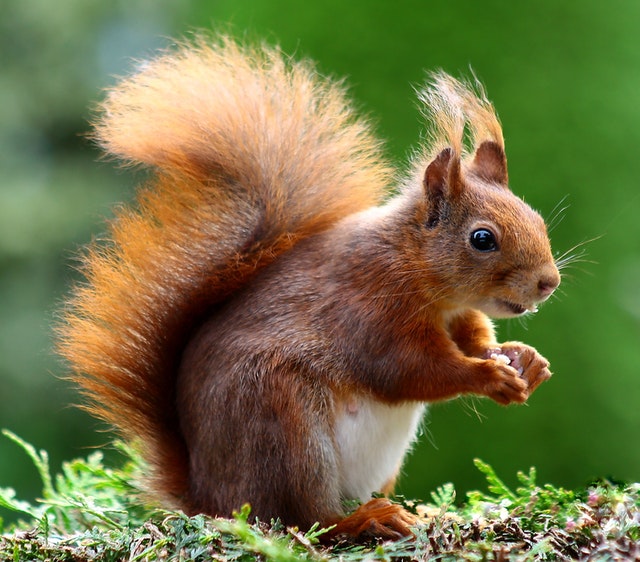
by SOS Wildlife Control | Nov 11, 2015 | Uncategorized
Last Updated: May 2016
Although not all raccoons are rabid raccoons, you should still take precaution. Canine distemper affects raccoons, dogs, skunks and other wildlife which is why it is important to stay alert and keep pets away from wild animals. The condition causes the animals to become disoriented, lethargic and even aggressive if cornered. It can cause harmful and potentially permanent effects to the animals’ respiratory, gastrointestinal and nervous systems – and can even be fatal. Animals that survive canine distemper may then suffer from neurological damage. Please keep your dogs safe and have them vaccinated for CDV (Canine Distemper Virus). The virus poses no risk to human health. For Canine Distemper please call Toronto Animal Services at 416-338-7297
Rabid Raccoons Behavior
Rabies is a viral disease that attacks the central nervous system of mammals. There are various strains of the virus. With the raccoon strain rabid raccoons may:
- be extremely excited
- more prone to attack or seem aggressive
- froth at the mouth
Raccoons can pick up various strains of rabies, but they are most susceptible to the raccoon strain. Risks to humans are low but you should always get check out if you are bitten or scratched by a raccoon or any wild animal. Once the symptoms show it can be fatal. If the disease is caught early, i.e. exposed people who get treated with a post-exposure vaccine right away can avoid getting sick
Tips to avoid human exposure to rabies
- Stay away from all wild animals, especially if they look sick, distressed or acting abnormal.
- If you see a potential rabid raccoon, keep the animal insight while maintaining a safe distance and report it by calling 311.
- Pets should be vaccinated. Rabies vaccinations for dogs and cats are required by law.
- Always maintain a safe distance from rabid raccoons or any rabid animal.
Read more on rabid raccoons in the official reports of Rabies Cases in Canada.
Call SOS Wildlife Control Incorporated at 1.800.981.0330 for raccoon control!
Call for Rabid Raccoons call 311
by SOS Wildlife Control | Nov 9, 2015 | Helpful Tips
Last Updated: May 2016
You’ve heard the saying “winter is coming” and with winter, also comes wildlife. Seeking shelter from the cold and new breeding grounds, they are quite adept at getting into your home. They will claw, scratch and clamor from the side vents, rooftops and even soffits. The best way to prevent animals from coming into your house is to wildlife proof your home with a qualified wildlife control specialist. If you are unable to do this, there are still steps you can take to ensure you property is less attractive to animals. Here is an extensive list of wildlife preventive tips you can do.
Wildlife Prevention Tips
Balconies
- Keep the balcony clear of all junk, debris, garbage, food and animal droppings
- Repair broken windows and screens
- Close accesses to storage areas
- Use wire mesh, plastic netting, pull down blinds or a commercial barrier to keep wildlife away
- Securely attach tin or other light metal at a 45-degree angle on the balcony ledge. This prevents animals from climbing onto your balcony
- Remove any material that birds might use for building a nest
- If you plan to be away, ask a friend or neighbour to check your balcony frequently for signs that animals have moved in or use wire mesh, plastic netting, pull down blinds or a commercial barrier to keep wildlife away
Barbecues
- Keep them clean and free of grease
Businesses
- Keep dumpsters closed as much as possible, especially during the evening
- Keep all work areas clean of debris and garbage
- Always close doors when you’re not using them
- Screen off all vents and fans that lead into the building
- Discourage anyone from feeding wild animals
- If an animal invades a work area, open access to the outdoors and allow it to escape
Children
- Teach wildlife safety to your children. Tell them that they should never approach or touch a wild animal and to call for an adult if they do see one.
Chimneys
- Properly cap them to block animals from getting inside the chimneys
- Check the cap annually to make sure it still blocks access
- Repair the flashing (tin or other metal that builders use to weather-proof the chimney) if animals have pried or chewed it to try to get inside
Decks and stairways
- Enclose open areas
- Repair enclosures when necessary
- Fill any holes under stairs with clay or concrete
Eaves trough
- Clean out regularly to prevent debris from building up. If you have a lot of debris in the eaves troughs, birds may try to build nests there.
Exterior
- Inspect all siding and general exterior for leaks, damaged or rotten areas and make necessary repairs
Exterior vent
- Place screens on all dryer, air, stove and bathroom vents that animals can’t get inside
Feeding
- Feeding birds is a nice way to attract them; however, bird feeders may also attract other wild animals
- Avoid encouraging wild animals by offering them food or leaving food available for them.
Garages
- Repair leaks, damaged or rotted areas in the siding, roof, foundation and outside walls
- Never leave your garage doors open overnight or for extended periods
Garbage
- Keep garbage in sealed containers at all times in an enclosed area
- Place containers at the curb only on the day of garbage pick-up
Lawns
- Staff at your neighbourhood garden center can advise you how you can eliminate grubs and other insects that some animals like to eat and can also let you know what you can use to safely remove the grubs without hurting the grass, other plants and your pets.
Lighting fixtures
- Repair and seal fixtures because birds like to nest in and on them
Mailboxes and ornamental fixtures
- Clean and check regularly
Pets
- The presence of a pet may deter wildlife; however, never let a pet chase or scare wildlife as wild animals could seriously injure your pet.
- Don’t leave pets outdoors unless you’re watching them as animals roaming free are always at risk of coming in contact with wild animals.
- Don’t feed your pets outdoors as food may attract wildlife
- Vaccinate your pet yearly against rabies and other diseases
Pools
- Animals may fall into your pool, unless your have raised it above the ground or fenced it in.
- Muskrats and ducks like to use your pool as a pond.
- Cover your pool with solar blanket when you’re not using it.
Roofs
- Repair and secure shingles and vents
- Place screens across vents.
Sheds
- Repair leaks, damaged or rotted areas in the siding, roof, foundation and outside walls.
- Never leave your shed doors open overnight or for extended periods.
- Close up the area beneath the structure, so animals can’t live there.
Soffits
- Repair or replace any loose or rotten soffits.
Tree wells
- Enclose and keep them free of debris as animals may fall in and become trapped.
Window wells
- Clean out and place a screen over the top.
Windows
- Seal any holes or openings in windows
- Fill in window boxes or place screens over them.
Yards and other parts of your property
- Clean up debris in the yard.
- Avoid using woodpiles, if possible as many animals like to nest or hide out in woodpiles.
- If you must have a woodpile, keep it in an enclosed area, such as a garage or shed.
- Cut down or remove any overhanging branches or old TV antennas around the home.
For additional prevention methods, we recommend a wildlife control company to assist you with wildlife proofing your home. Remember that the longer animals are in your home, the more damage they cause. The best way to think about wild proofing your home is see it has a home improvement and/or damage prevention.
Call SOS Wildlife Control Incorporated at 1.800.981.0330 for Wildlife Problems
by SOS Wildlife Control | Nov 7, 2015 | Skunk Control
Last Updated: May 2016
Skunks are extremely well known for their horrible smelling, predator deterrent sprays. For that, residents of the City of Toronto and the GTA have been struggling skunk problems.
 The Main Skunk Problem – Smell
The Main Skunk Problem – Smell
One of the main problem skunks cause is their ability to spray a disastrous mist that can travel as far as ten feet. The scent from a skunk’s spray can linger for hours, days, sometimes months. The smell is one of the main indicators you have skunk problem. Skunks usually use their sprays to deter their predators or when they feel threatened from noise, weather conditions etc.
Aside from their presence being a nuisance in or around one’s neighborhood, skunks’ adaptability to different habitats can make them satisfied guests. Skunk under porches, skunk under decking, skunk inside sheds and skunk between structures/walls are all common skunk problem ‘s. Skunk control is hard work as getting rid of skunks would definitely require professional services. In the interim, these stripy animals can dig holes in your lawn, damage and contaminate crop in agricultural settings, and general skunk odor which could seep into fabrics and surfaces. While the odorous surfaces may need as much as complete replacement, the actual skunk removal or skunk family removal is only a job for the professionals. As we do with all other wildlife removal needs, we take a humane approach with skunks. Our professionally trained technicians can inspect and understand the behavior of a skunk, detect their entry and exit points, close their entry points using mesh and traps. Our technicians take the skunks to a safe, natural environment, a reasonable distance from your property to avoid re-denning and a return of your skunk problem.
Controlling a Skunk Problem
As with most other wildlife, there are certain things you can do to avoid skunk infestation. Keeping inside and outside of your residential or commercial property clean, tidy, and organized is key. Because of their superior digging skills, and long, strong nails, skunks can cause damage and cut through garbage and compost bins without hassle and get to food remnants. Preventative measures can be key in skunk control. Feed all domestic pets indoors, keep pet food contained. It is a dangerous and uncomfortable experience for pets to get sprayed by skunks. The odor and the chemicals from the spray that the skunk generates can burn pets’ eyes, and the odor stays on their fur and skin for long periods of time. There are home remedies to provide instant relief to pets in case of a skunk confrontation. Be wary of structural issues like holes, cracks, which could provide easy entrance and exit points for skunks. Sealing any structural entry points is the number one preventative measure to a skunk problem.
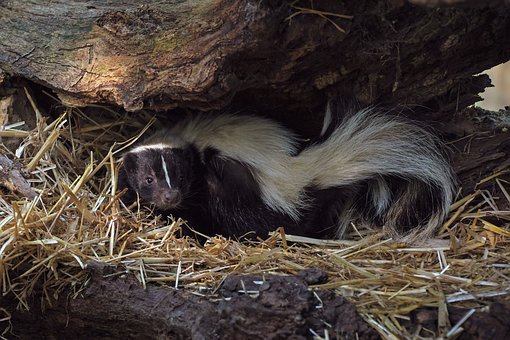 When it comes to a skunk problem, we don’t recommend any DIY options. Although there are ways one could prevent a skunk problem becoming an infestation, it’s very difficult to actually remove them from one’s property. Ministry of Natural Resources protect wildlife and if body gripping traps or poison are used during the capture of skunks, one can be charged up to $5000 and face criminal charges for animal cruelty. Diseases like rabies, leptospirosis, and distemper can be a few of the diseases that could easily be transmitted to humans and pets during the removal process, not to mention the everlasting odor of the skunk spray. Humans who have been sprayed by skunks have been noted to be discomforted by the smell for up to 4 months.
When it comes to a skunk problem, we don’t recommend any DIY options. Although there are ways one could prevent a skunk problem becoming an infestation, it’s very difficult to actually remove them from one’s property. Ministry of Natural Resources protect wildlife and if body gripping traps or poison are used during the capture of skunks, one can be charged up to $5000 and face criminal charges for animal cruelty. Diseases like rabies, leptospirosis, and distemper can be a few of the diseases that could easily be transmitted to humans and pets during the removal process, not to mention the everlasting odor of the skunk spray. Humans who have been sprayed by skunks have been noted to be discomforted by the smell for up to 4 months.
Skunk Facts:
Aside from being known for their smelly sprays and unique stripy appearances, there are actually so much more to know about these problematic members of the wildlife.
- They are predominantly inhabitants of North America
- They are extremely adaptable and can survive in different habitats given there is food and shelter
- They are omnivores, consuming a diet of both plant and insects/grubs. They are opportunistic eaters so they are flexible with their diets as seasons change
- They can survive throughout the year, from the most extreme weather conditions to the least. Although not extremely active, they seek shelter under porches
- Much like raccoons, skunks are nocturnal, conducting most of their activities at nighttime
- They have extremely strong forefeet and long nails, making them great diggers. They are known to dig holes in lawns, gardens, parks, golf courses etc.
- Although the most powerful, spraying is not the first method of defense for skunks. They tend to growl, spit, fluff its fur, and stomp the ground
- Compared to their friends in the wild, skunks are shy and they don’t like to fight other animals
- Skunks live between 2-3 years
- Skunks are very smart, they will roll a furry caterpillar on the ground to get rid of its hair before eating it
- Skunks’ stripes point to the anal gland where they spray from
- Before spraying their predators, skunks do a warning dance which include stomping on the ground and hissing
- Skunk spray is highly flammable
- Skunks don’t like altercation, if proper measures are followed, skunk control can easily be maintained
- Many wildlife control companies in Ontario prefer not to provide skunk removal services
At SOS Wildlife Control Incorporated, we provide superior skunk removal services for residential, commercial, and industrial clients. Let us help you solve your skunk problem ‘s. We can easily be reached at 1-800-981-0330. Don’t wait and call us to schedule an appointment for a thorough inspection to help evacuate all your unwanted wildlife problems.
Call SOS Wildlife Control Incorporated 1.800.981.0330 for your skunk problem

 SOS Wildlife Control Incorporated will arrive at your home, inspect your attic or garage or wherever you hear the wild animal and provide you with a thorough outline of what the problem is, finding the main entry point, the options you have and give you an estimate.
SOS Wildlife Control Incorporated will arrive at your home, inspect your attic or garage or wherever you hear the wild animal and provide you with a thorough outline of what the problem is, finding the main entry point, the options you have and give you an estimate.


 Small and quick footed, these little creatures can cause quite the headache to many homeowners across the GTA. Squirrel Damage is one of the most common wildlife problems in Ontario. We see them everywhere, under all types of weather conditions; squirrels are a part of our culture, and of our natural environment. The trouble starts when the weather conditions become more and more extreme, and they start looking for shelter. As it starts snowing and weather gets colder, squirrels start looking for a new home. Often times they sneak in through garage doors, structural cracks, climb through left open doors and windows and climb down your chimneys. Their preference? Your attic!
Small and quick footed, these little creatures can cause quite the headache to many homeowners across the GTA. Squirrel Damage is one of the most common wildlife problems in Ontario. We see them everywhere, under all types of weather conditions; squirrels are a part of our culture, and of our natural environment. The trouble starts when the weather conditions become more and more extreme, and they start looking for shelter. As it starts snowing and weather gets colder, squirrels start looking for a new home. Often times they sneak in through garage doors, structural cracks, climb through left open doors and windows and climb down your chimneys. Their preference? Your attic! 
 The Main Skunk Problem – Smell
The Main Skunk Problem – Smell When it comes to a skunk problem, we don’t recommend any DIY options. Although there are ways one could prevent a skunk problem becoming an infestation, it’s very difficult to actually remove them from one’s property. Ministry of Natural Resources protect wildlife and if body gripping traps or poison are used during the capture of skunks, one can be charged up to $5000 and face criminal charges for animal cruelty.
When it comes to a skunk problem, we don’t recommend any DIY options. Although there are ways one could prevent a skunk problem becoming an infestation, it’s very difficult to actually remove them from one’s property. Ministry of Natural Resources protect wildlife and if body gripping traps or poison are used during the capture of skunks, one can be charged up to $5000 and face criminal charges for animal cruelty.